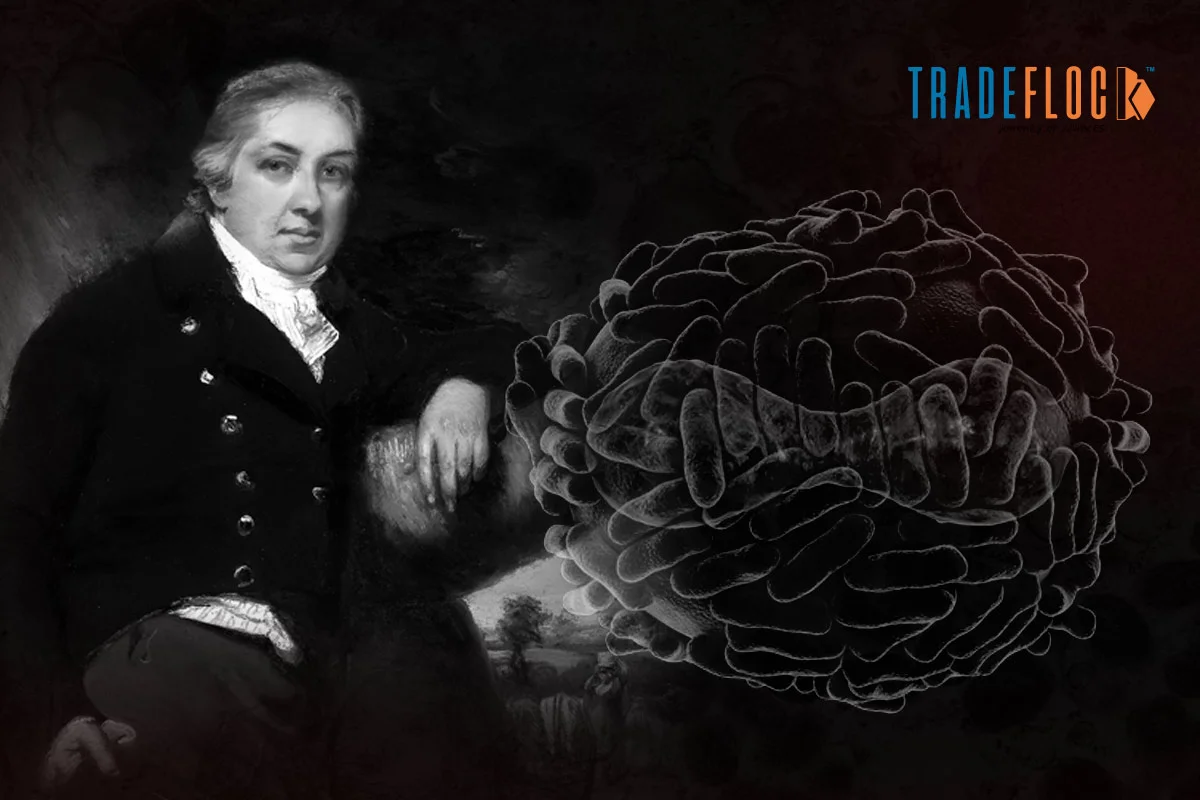One of the deadliest infectious diseases in the history of humankind, smallpox is estimated to have killed nearly 300 million people in the 20th century. On 8th May 1980, the World Health Assembly declared smallpox to be eradicated.
The process of getting the world freed of smallpox began much earlier, when on 14th May 1796, an English physician and scientist named Edward Jenner began testing his hypothesis for a smallpox cure by inoculating an eight-year-old boy named James Philips, the son of Jenner’s gardener. This was followed by a landmark invention that changed the medical landscape of the world and eventually bestowed Jenner with the title of the Father of Immunology.
Edward Jenner was born on 17th May 1749 in Berkeley, Gloucestershire, England, the eighth of nine children of the Vicar of Berkeley, the Reverend Stephen Jenner, and his wife Sarah. His invention of the cure for smallpox is said to have saved more lives than any other person. He can be credited with introducing the concept of vaccine, which led to the world’s first vaccine—the smallpox vaccine.
To give perspective on the enormous, or rather almost unimaginable, impact of Jenner’s invention, we must remember that during Jenner’s time, more than 10 per cent of the global population was claimed by smallpox. Smallpox was rampant in the 18th century, and its occasional outbreaks of special intensity caused many casualties. Disfigurement among patients who recovered was also common.
Jenner had observed that a person who suffered an attack of cowpox, which was a relatively harmless disease compared to smallpox and could be contracted from cattle, did not get infected by smallpox. He noticed that milkmaids who got cowpox were safeguarded from smallpox. From this observation, he deciphered that cowpox could act as protection against smallpox. He concluded that the matter from cowpox if transmitted in small quantities to a person, could prevent the ogress of smallpox from invading his/her body.
According to The Jenner Institute, in May 1796, a dairymaid named Sarah Nelmes consulted Jenner about a rash on her hand. Jenner diagnosed she was having cowpox rather than smallpox, and Sarah confirmed that one of her cows, a Gloucester cow called Blossom, had recently had cowpox. Edward Jenner recognized this as his chance to test cowpox’s protective effects by administering it to someone who had not yet contracted smallpox.
According to Britannica, on 14th May 1796, he inoculated James Phipps, who had never had smallpox, using matter from Sarah’s fresh cowpox lesions. The boy was slightly ill for the next nine days but recovered on the 10th day post-inoculation.
On 1st July, he inoculated the boy again, this time with variolous material, but Philips developed no infection. Variolation is the intentional inoculation of an individual with smallpox material, which results in a milder form of the disease with a significantly lower fatality rate than for people getting smallpox naturally. The origin of variolation could be traced to 16th-century China.
Philips was again subjected to the same experiment, and smallpox failed to invade his body. Edward Jenner’s hypothesis was successful, and a concrete and scientific cure for smallpox was found.
The variolation has long paved the way for the smallpox vaccine. Edward Jenner’s visionary idea of using cowpox-infused injections to produce immunity against smallpox led to the world’s first vaccine. After some more successful experiments, in 1801, Jenner published his treatise titled ‘On the Origin of the Vaccine Inoculation,’ in which he summarised his discoveries and hoped that “the annihilation of smallpox, the most dreadful scourge of the human species, must be the final result of this practice.”
Here, we also need to mention that Edward Jenner’s experiment or inoculation of James Philips was grossly unethical by modern standards of science and should not have been carried out by any scientist. Treating a human being and that too a child as a human guinea pig is totally unacceptable in the realms of modern science.
According to The Jenner Institute, “In 1967, the World Health Organization (WHO) launched its campaign to eradicate smallpox worldwide. They estimated at that time that there were still up to 15 million cases of smallpox each year. The biggest problem areas were South America, Africa and the Indian subcontinent. Their approach was to vaccinate every person in the areas at risk. Teams of vaccinators from around the world journeyed to the remotest of communities.”
From the information provided by the Centers for Disease Control and Prevention, the national public health agency of the United States, we know that nearly two hundred years after Jenner envisioned the potential of vaccination to eradicate smallpox, the 33rd World Health Assembly officially declared the global eradication of the disease on May 8, 1980. Many people rightly think that eradicating smallpox is among the biggest achievements in international public health.






